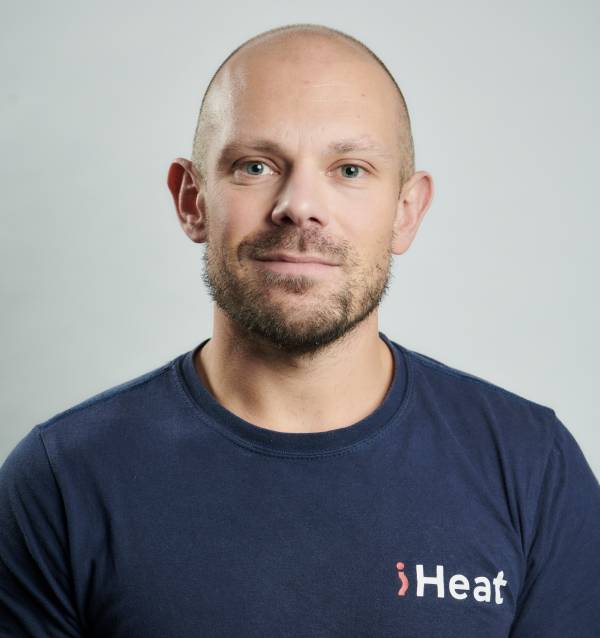

Written by Stephen Day
Gas Safe Engineer
Updated: 30th May, 2025
When a boiler starts displaying an error code out of the blue it can be a shock to the system, especially if you can’t heat your home the way you’d like to.
Get a new boiler quote, save up to £550 per year (0% APR available).
When a boiler starts displaying an error code out of the blue it can be a shock to the system, especially if you can’t heat your home the way you’d like to.
In this blog we’ll be taking a look at how to diagnose and fix the E1 boiler error code, a common and frustrating occurrence that may not be as daunting once you know more about it.
To start things off we’ll explain what an error code is, their function and where to find them.
An error (fault) code is as simple as its name suggests, an alphanumeric digit code e.g E110, which is displayed when a boiler is not functioning as it should.
An error code can usually be located on the boiler's display screen, a small, often backlit digital window found either in the centre of the boiler casing or at the toe of the boiler covered by a small plastic panel.
They can be definitely stressful, however this particular fault code cluster, the E1 catalogue, isn't as sinister as some other fault codes.
Most of the time the E1 error code connotes low boiler pressure which can result in the boiler ‘locking out’ or shutting down to avoid further damage or safety problems.
Occasionally an E1 code may be indicating a different type of component or unit failure, this is why it’s important to assess the digit sequence following the ‘E1’ part of the code for example E133.
E110 - Water flue or System has overheated
E160, E50, E28, E20 - Faulty component
E133 - Ignition failure, interrupted gas supply, flame undetected, frozen condensate pipe
E168 - Undeterminable fault (electric supply/external issue)
E119 - Pressure below 0.5 bar
E1 Fixes
E110, E133 - rotate selector dial to reset position and hold for 5 seconds.
E160, E50, E28, E20, E168 - take note of exact error code and contact an engineer
E119 - Repressurise the system via filling loop
If none of these fixes solve the problem then it’s time to contact a Gas Safe registered engineer.
A boiler filling loop is a tool used to provide a temporary connection between the boiler and the mains water supply, allowing you to repressurise your boiler and fill your heating system with water.
You can find out how to easily use a boiler filling loop in our simple step by step blog.
Typically, the engineer that fits your boiler will leave the filling loop nearby so you can easily access it should any issues arise later down the line.
Some modern boiler models have internal filling loops, this means the braided coil piping that external loops are made of is already attached in place, all you need to do is open and close the mains valves.
However, if you are unable to find it, you can easily find a replacement filling loop online or at your local DIY shop, typically costing £7-£20.

The easiest way of ensuring your boiler is in optimal working order is by arranging for it to be annually serviced by a Gas Safe engineer, these in depth diagnostic assessments can detect faults early and can lead to preventive proactive maintenance.
New and efficient boilers have been designed with longevity and performance in mind. It’s a scientific and engineering fact that modern boilers are constructed in accordance with leps in technology, ensuring your new boiler will stand the test of time.
Boilers can be a daunting purchase for many people as they’re an appliance with a lot of responsibility, providing heat for you and your family is something you want to get right. Boilers aren’t exactly a quickly disposable item either, potentially lasting you a decade.
Effectively, new boiler cost can be split into two segments: the first is the actual boiler itself (unit price), and the second is the cost of the boiler being installed (set up) in your property by an expert engineer.
Here at iHeat, we want to remove all of this undue stress and make the decision making process of upgrading to a new central heating system, as easy as possible.
Boiler costs can vary depending on a number of factors including their brand, model, fuel, output, warranty, labour and installation type. Typically a new boiler will cost between £1,845 and £3,500, below is a list of average boiler installations offered by iHeat (guide only).
Installation Type | Price (inc VAT) | |
Combi to combi swap | £1,845 | |
System to combi conversion | £2,499 | |
New boiler install | £2,899 | |
Back boiler to a combi | £3,299 | |
System to system | £1,945 |
Last updated: 30th May, 2025

Written by Stephen Day
Gas Safe Engineer at iHeat
Stephen Day is a Gas Safe registered and FGAS certified engineer with over 20 years of hands-on experience in the heating, cooling, and renewable energy industry, specialising in boiler installations, air conditioning, and heat pump systems.
LinkedInArticles by Stephen Day are reviewed by iHeat’s technical team to ensure accuracy and reliability.

22nd December, 2025
Based on data from over 7000 boiler installations completed by iHeat in the past 12 months...
 Read Article
Read Article

22nd December, 2025
Here’s a quick roundup of the best combi boilers for 2026.
 Read Article
Read Article

22nd December, 2025
When your old boiler breaks down and it comes time to replace it with a new one, it might...
 Read Article
Read Article
No obligation. Takes less than 60 seconds.